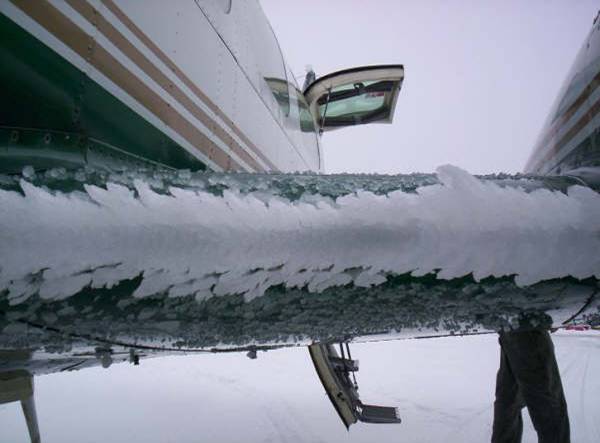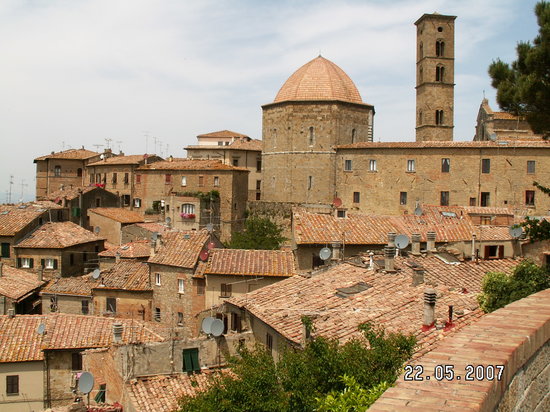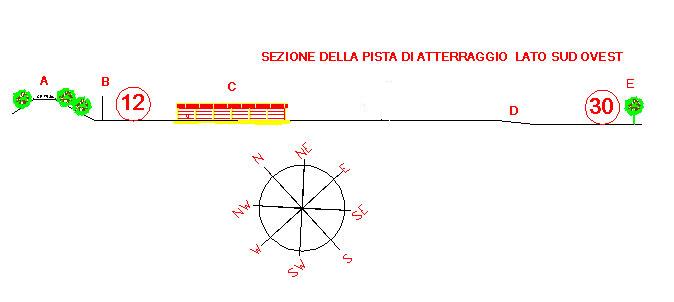I am a pilot!
Since Saturday I am officially a pilot, no longer just a student pilot!
It was definitely a very long day: I spent almost nine hours at the airfield, from half past eight in the morning until half past six in the evening, with an hour lunch break.
The day had not started the best: just after I left home the sky was full of gray clouds, completely covered. Once arrived at the field it had also started raining insistently. Definitely not the best day for a test flight! But at least there was my girlfriend to support me!
The exam consists of a theory test and a practical test.
The theory test consists of 70 multiple-choice questions that include meteorology, flying technique, safety, equipment, navigation, legislation and aerodynamics. Seven mistakes are allowed, above which the test is considered failed. The theoretical test is probably the most worrying part of the exam, given that often the questions are ambiguous if not deliberately deceptive.
The practical test consists of a take-off, circuit, go-around, a second circuit and finally the landing. This is at least what is prescribed by the rules, but the examiner has decided to do it in his own way for this occasion...
The practical exam may sound a bit simple compared to what is required, for example, to get the private pilot license, but there is a reason to this.
After I passed this exam I can fly only on my own or with an instructor, I can not carry with me anyone else.
To have the qualification for passenger transportarion I must accumulate more than thirty hours of flight and a I have to take a second practical exam, which instead will be much more complex, since it will include step turns, stalls with and without engine, emergencies, engine failure, landing in other airfield and you must demonstrate to be able to make a navigation without problems.
Once arrived at the airfield, it took over an hour sice the examiner and all the other aspiring pilots arrived and everything was ready to start. While I and six other examinees were struggling with the theoretical test, under the watchful eye of one of the instructors of the school, the examiner held the navigation test for the pilots who had to achieve the passenger transportation enablement.
We had two hours available for the test, but after one we had all finished. Luckily it went very well: we all passed! Having failed in only two questions over seventy I also feel quite satisfied, although I know I could do better.
After the theory test we had another hour break, as the examiner was still busy with the navigation exam. Since the rain had stopped and the weather seemed to be improving, I and the other examinees took the opportunity to speak, know each other better and have a coffee, as well as to look around a bit all over the field, especially in the area of an
ultralight helicopter that had just landed, immediately attracting our curiosity.
When we came back to start the practice test I was very nervous: the examiner had not made a good impression to us and seemed more interested in showing the world his wisdom then to carry out regular exams.
Obviously ...
I was the first!
I boarded the plane almost regretting I didn't stay at home.
The examiner made his debut by stating that for him headsets are uncomfortable, so given that the aircraft is not equipped with speakers we would not have used the radio. After I executed all pre-flight checks, I started taxing directed at the holding point for runway 12. After performing the engine test and all the pre- take-off checks , after checking the wind (which, fortunately, was virtually absent) and the absence of traffic in the final or in base,
I lined up and took off .
Immediately after take-off, when we were not more than two hundred feet from the ground, the examiner asked me to reduce the power to the engine, a thing I had to do reluctantly, given that generally basic safety procedures state that it is better to mantain full throttle at least up to 500 ft!
At 300ft I removed the flaps and then I leveled to 500 feet , and then turn in counterbase and then right downwind .
When I was in the middle of the downwind, the examiner asked me to make a 360° step turn, making me somewhat confused as it was not expected in the examination. I have not had many problems still to do it, though he has started for unknown reasons hacking away on the stick and on the throttle. After the turn I perfectly was back where I had started it. The procedure that we use at the field is to set the throttle at idle once with the wing parallel to the runway threshold, then to slow down to the maximum efficiency speed, to put 15 ° of flap and then to turn into the base and then in final. Obviously for the examiner this was not good, so he started to remove power in the middle of the circuit to slow me down. All of this, of course, without exchanging a word, since without headphones the infernal noise of the engine hung over any communication.
Thirty seconds were almost comical, with the examiner removing power and I putting it back again, at least three or four times. I turned then in the base leg and then in final I entered all the flaps and got ready for landing, although I knew that at some point I had to go-around, as expected from the examination procedure.
Afters stressing me again, while on final, saying I was too fast (when I kept exactly the speed that I always used with my instructor and that the latter never missed an opportunity to remind me to keep),
I landed smoothly, without further problems and without the expected go-around, that he didn't call.
As I finished the exam I was quite relieved, though a little upset by the behavior of the examiner!
However, looking at the other exams, I think it could have been worse. He asked to another guy to remove flaps at 100ft after take-off, at a second he asked to land with only 15 ° of flap with a
wing slip (a maneuver that involves making the plane fly in an uncoordinated manner, crossing the rudder and aileron controls, so as to increase the resistance and thus lose altitude quickly).
Even with others he has worked hard to make problems of various kinds and enlighten us with his pearls of wisdom. Our instructors were, obviously, really upset.
After finishing my exam I watched the examination of the other guys.
The wait has been mitigated by the visit of a strange but beautiful guest!
After lunch I went back for the afternoon session, which lasted until 5 pm. At that point we all gathered to take a picture and then for the final greetings.
In the final speech, the examiner obviously stated the nice affirmation that if he could have done the exams as he wanted, rather than according to the rules,
half of us would have been rejected.
What a nice person!
Now, unfortunately, It will begin a period of a dead time: I have to wait at least a month to physically get my certificate, since it has to come from the headquarters of the Aeroclub of Italy in Rome. In the meantime, I can not fly, no longer being a student of the flight school and still not holding the certificate in my hands, although I passed the exam.
Unfortunately Italy is known for its bureaucratic inefficiencies!
-------------------------------
Sono pilota!
Da sabato sono ufficialmente pilota, non più allievo ma pilota a tutti gli effetti!
E' stata decisamente una giornata molta lunga: ho passato al campo quasi nove ore, dalle otto e mezza di mattina fino alle sei e mezza di sera con un'ora di pausa pranzo.
La giornata non era decisamente partita al meglio: uscito di casa il cielo era carico di nuvole grigie, completamente coperto. Arrivato al campo aveva anche iniziato a piovere insistentemente. Decisamente non la giornata migliore per un esame di volo! Se non altro però c'era la mia ragazza a supportarmi!
L'esame consiste in una prova teorica e in una pratica.
La prova teorica consta di 70 domande a scelta multipla che comprendono meteorologia, tecnica di volo, sicurezza, impianti, navigazione, legislazione, aerodinamica. Al massimo sono consentiti sette errori, superati i quali la prova è considerata fallita. Il test teorico è probabilmente la parte dell'esame in genere che preoccupa di più, dato che spesso le domande sono ambigue se non volutamente ingannatrici.
La prova pratica consiste in decollo, circuito, riattaccata, secondo circuito e in fine atterraggio. Questo almeno è quello che prevederebbero le regole, sebbene poi l'istruttore-esaminatore arrivato da Roma abbia deciso di fare di testa sua in questa occasione...
L'esame pratico può sembrare abbastanza semplice rispetto ciò che è richiesto, ad esempio, per ottenere il brevetto di pilota privato, ma c'è un motivo.
Superato questo esame infatti posso volare solamente da solo o con l'istruttore, non posso cioè portare nessun passeggero.
Per avere l'abilitazione al trasporto del passeggero dovrò accumulare altre trenta ore di volo e superare un secondo esame pratico che invece sarà molto più complesso, poiché comprenderà virate strette, comandi incrociati, stalli con motore, senza motore, emergenze, piantate motore, atterraggi fuori campo e la dimostrazione di sapere pianificare una navigazione senza intoppi.
Una volta arrivato al campo c'è voluta un'oretta perché arrivasse l'esaminatore, tutti gli aspiranti piloti e tutto fosse pronto per iniziare. Mentre io e altri sei esaminandi lottavamo con il test teorico, sotto lo sguardo vigile di uno degli istruttori della scuola, l'esaminatore svolgeva la prova teorica di navigazione con i piloti che dovevano conseguire l'abilitazione al biposto.
Il tempo a disposizione era di due ore ma già dopo un'ora avevamo tutti finito. Per fortuna è andata bene: tutti promossi! Avendo sbagliato solo due domande su settanta mi sento anche abbastanza soddisfatto, sebbene so che avrei potuto fare di meglio.
Finita la prova teorica abbiamo avuto un'altra ora di pausa, poiché l'esaminatore era ancora impegnato con le prova di navigazione. Dato che aveva smesso di piovere e il tempo sembrava migliorare, io e gli altri esaminandi ne abbiamo approfittato per discutere un po', conoscerci meglio e prendere un caffè, oltre che per curiosare un po' in giro per il campo, soprattutto nella zona di un elicottero ultraleggero appena atterrato che aveva subito attirato la nostra curiosità.
Quando siamo stati richiamati per iniziare la prova pratica la tensione era tanta: l'esaminatore non ci aveva fatto una buona impressione e sembrava più intenzionato a mostrare al mondo la sua sapienza che a svolgere degli esami regolari.
Ovviamente... io ero il primo!
Lasciata la giacca alla mia ragazza, sono salito sull'aereo quasi rimpiangendo di non essere stato a casa. L'esaminatore ha esordito dichiarando che a lui le cuffie aeronautiche stavano scomode, quindi dato che l'aereo non è dotato di altoparlanti non avremmo usato la radio. Eseguiti tutti i controlli pre-volo, mi sono quindi diretto al punto attesa per la pista 12.
Eseguita la prova motore e tutti i controlli pre-decollo, dopo aver controllato il vento (che per fortuna era praticamente assente) e l'assenza di traffici in finale o in base, mi sono allineato e sono decollato. Subito dopo il decollo, quando eravamo a nemmeno duecento piedi da terra, l'esaminatore ha voluto che riducessi la potenza al motore, cosa che ovviamente ho dovuto fare a malincuore, dato che in genere le norme basilari di sicurezza prevedono di tenere il motore al massimo almeno fino a 500 ft! A 300ft ho tolto i flaps e quindi ho livellato a 500 piedi, per poi virare in controbase e quindi in sottovento destro.
Quando ero a metà del sottovento, l'esaminatore mi ha chiesto di fare una virata stretta di 360°, cosa che mi ha alquanto spaesato dato che non era prevista nell'esame. Non ho avuto comunque molti problemi a eseguirla, sebbene lui abbia cominciato per motivi ignoti a smanettare sulla barra e sulla potenza. Finita la virata ero di nuovo perfettamente dove la avevo iniziata. La procedura che utilizziamo al campo prevede di togliere motore una volta arrivata al traverso della testata pista, quindi rallentare alla velocità di massima efficienza, inserire 15° di flap e quindi virare in base e poi in finale. Ovviamente questo all'esaminatore non poteva certo andare bene, e quindi ha iniziato a togliermi potenza a metà del circuito per farmi rallentare. Tutto questo ovviamente senza scambiare una parola, dato che senza cuffie il rumore infernale del motore sovrastava qualsiasi comunicazione.
Sono stati trenta secondi quasi comici, con l'esaminatore che toglieva motore e io che lo rimettevo, lui lo toglieva di nuovo e io lo rimettevo ancora. Una volta virato in base e poi in finale ho inserito tutti i flap e mi sono preparato all'atterraggio, anche se sapevo bene che a un certo punto avrei dovuto interromperlo per riattaccare, come previsto dall'esame.
Dopo avermi stressato anche in finale sostenendo che ero troppo veloce (quando mantenevo esattamente la velocità che avevo sempre utilizzato con il mio istruttore e che quest'ultimo non perdeva mai occasione di rammendarmi di mantenere), sono atterrato morbidissimo e senza ulteriori problemi: invece di farmi riattaccare mi aveva fatto atterrare e fermare.
Finito l'esame ero parecchio sollevato, anche se un po' turbato dal comportamento dell'esaminatore. Tuttavia guardando gli altri esami penso che poteva andare peggio. A un altro ragazzo ha fatto togliere i flap a 100ft dopo il decollo, a un secondo gli ha chiesto di atterrare con soli 15° di flap imponendogli poi una scivolata d'ala (una manovra che consiste nel fare volare l'aereo in maniera scoordinata, incrociando i comandi del timone e degli alettoni, in modo da far aumentare la resistenza e quindi perdere quota velocemente). Anche con gli altri si è prodigato a fare scherzetti di vario tipo e a illuminarci con le sue perle di saggezza. Non vi dico la faccia degli istruttori della scuola quando si sono resi conto di quello che stava combinando!
Dopo aver finito il mio esame sono rimasto a guardare l'esame degli altri ragazzi. L'attesa è anche stata mitigata dalla visita di uno strano ma bellissimo ospite!
Dopo pranzo sono ritornato per la sessione pomeridiana, che è durata fino alle cinque del pomeriggio. A quel punto finiti tutti gli esami ci siamo tutti raccolti per fare una foto e poi per i saluti finali.
Il discorso finale dell'esaminatore non poteva che contenere un altro poco di autoincensamento e ovviamente la simpatica affermazione che se avesse potuto fare gli esami come voleva lui, invece che secondo le regole, la metà di noi sarebbe stata bocciata.
Simpatia portami via...
Ora purtroppo inizierà un periodo un po' morto: per avere l'attestato dovrò aspettare almeno un mese, dato che deve arrivare dalla sede centrale dell'Aeroclub d'Italia a Roma. Nel frattempo non potrò volare, non essendo più né allievo della scuola né avendo ancora tra le mani l'attestato, sebbene abbia passato l'esame. Purtroppo l'Italia è nota per le sue inefficienze burocratiche!

















.jpg)

.jpg)
















